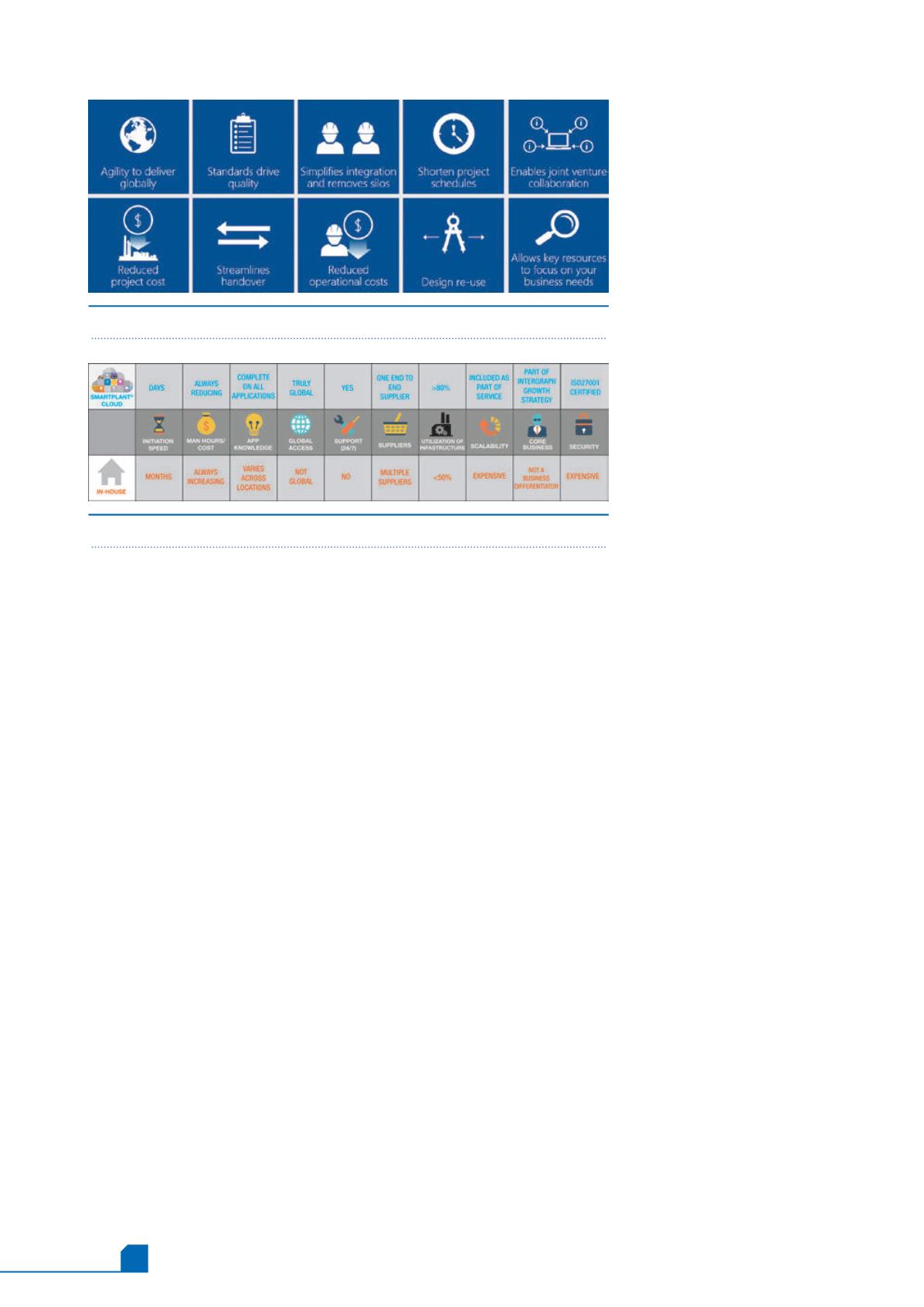
June
2016
HYDROCARBON
ENGINEERING
44
Aside from the safety risks, unstructured or poorly
managed engineering information can lead to other serious
consequences for both plant owners and EPCs:
n
n
Inefficiency of operations and maintenance: preparing
for maintenance tasks or daily operations wastes
precious work hours when information is unavailable,
outdated, or scattered in different locations.
n
n
Increased cost of modifications and turnarounds: plant
shutdown time can be significantly lowered when
unforeseen issues arise in the turnaround by having
access to relevant, correct engineering information.
n
n
Compliance challenges: failure to locate accurate and
up to date information of the asset during an external
audit can lead to fines and other penalties by
regulatory authorities.
The situation is even more critical on today’s
geographically complex mega projects. Large projects are
very sensitive to practices and processes, including
information management techniques, because they are
more complex and involve multiple participants and
contractors.
The project delivery process is already a complex one
with multiple moving parts, from project definition at the
front end right through to handover and operations – the
complexity increases exponentially with each new
participant.
Cloud technology
A simple solution to the engineering information
challenge is available: cloud technology – where
drawings, reports, schedules, tag lists, criticality lists, etc.,
exist in a single location with all project and/or
operational staff accessing, not recreating, the same piece
of information. The most innovative owners and
contractors recognise that a move to a cloud environment
will improve engineering
information, help to better
manage projects costs and
improve efficiency.
Using a cloud-based solution
enables the project deliverables
to support the next phase front
end engineering design (FEED),
detail design, fabrication and
construction, and to support
ongoing plant operations. This
consistency offers opportunities
to better meet schedules, reduce
organisation migration costs, and
ease the handover process from
project to operations by
providing a centralised, integrated
access point to all engineering
data and services.
In addition, controlling access
in a cloud environment is
straightforward, hence, each user
has access only to the data that is
relevant to them. A cloud-based
solution reduces this risk of a
negative security incident by protecting data with strong
user compliance and governance. For example, an
instrumentation engineer has full access to the
instrumentation data, but view-only access to a limited
part of the electrical engineering data. This central access
management is particularly convenient when there are
changes in personnel, contractors, during turnaround
planning, or when a project moves between phases.
Furthermore, the backup and disaster recovery strategy
also protects data confidentiality, integrity and availability
in case of an event.
Working in the cloud offers multiple significant
financial benefits. Global joint ventures can have their
entire project environment up and running very quickly,
using a collaborative project structure where information is
made accessible and reusable for all.
Benefits of cloud technology
n
n
Reduced capital expenditure: lowers the cost at
multiple local sites by central cloud delivery.
n
n
Faster project startup: a project environment can be up
and running in days, rather than the months that would
be required to agree, build and deliver tools needed by
the end users.
n
n
Improved collaboration: all project participants have
easy access to relevant data, reducing rework between
the project phase and handover.
n
n
Procurement, construction, and operations advantages:
cloud provides better opportunities for greater
material consolidation and construction sequence
planning, and more effective and timely operations
training.
n
n
Smoother project handover: every engineering
company has its own system and standards, which are
not necessarily compatible with that of the project
owner’s. This can cause considerable issues at the
Figure 2.
The advantages of SmartPlant
®
Cloud over in-house solutions.
Figure 1.
SmartPlant
®
Cloud key benefits.


